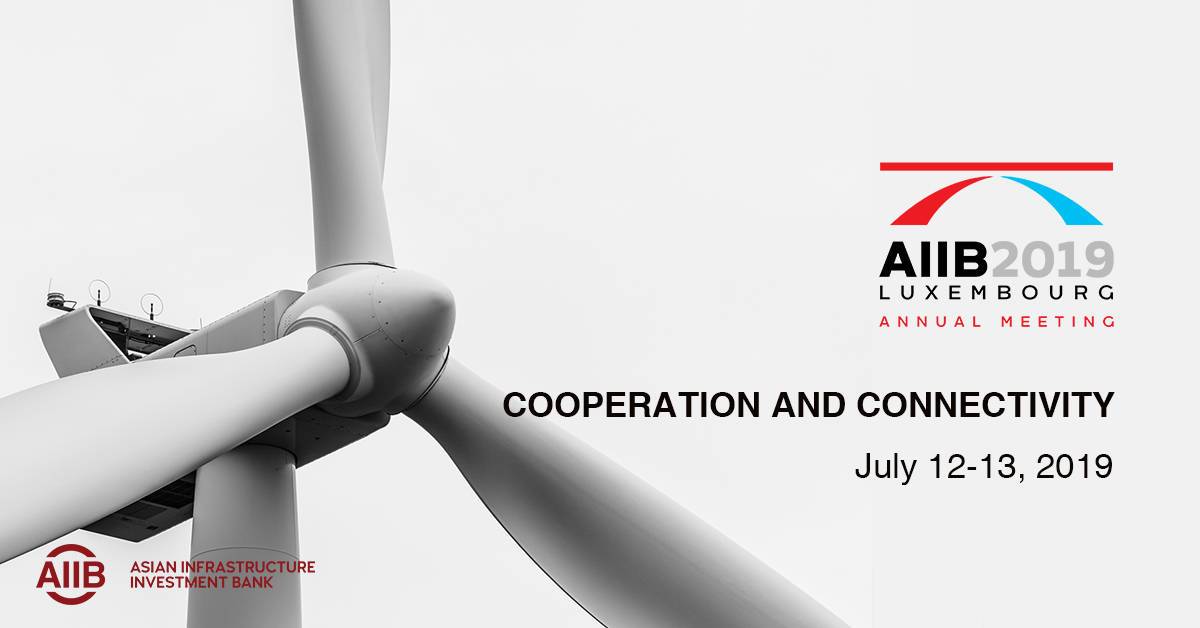Two forms of renewable energy get much of today’s energy headlines—solar photovoltaic and onshore wind. Yet, there is a new and fast-growing renewable energy source being added to the much-needed clean energy mix: offshore wind.
Offshore wind refers to wind turbines that harness wind energy to produce electricity and are typically installed 40 meters to 80 kilometers from the coast where wind is stronger and more consistent. With most of the major Asian cities located in coastal areas, offshore wind feels like a natural and clean energy option for the region.
In 2018, offshore wind accounted for only 0.4 percent of global electricity generation, according to Bloomberg New Energy Finance (BNEF). However, the global total installed capacity of offshore wind increased more than tenfold from 1.8 GW in 2010 to 22.5 GW in 2018, dominated by the mature European offshore wind market. This capacity is enough to power several million households per year.
Asia is starting to follow the successful European experience. In 2018 alone, Asia accounted for 40 percent (1.9 GW) of new installed capacity, primarily driven by China. BNEF expects Asia to account for half of global addition by the 2020s. Besides China, India is planning to launch a 1 GW offshore wind auction in 2019 and Viet Nam is developing an ambitious 3.4 GW project in Binh Thuan Province. Japan, South Korea and other Asian countries are also contributing to market uptake and setting ambitious targets.
This market growth in both Europe and Asia is helping drive economies of scale. It further propels rapid cost reduction driven by both innovation and nontechnological improvements such as (1) increasing turbine size [the largest offshore wind turbines are now almost the size of the Eiffel Tower!], (2) maturing supply chain and (3) growing developer experience. This growth is also providing an alternative business opportunity for the offshore oil and gas sector.
Despite the promising outlook, offshore wind development is not without challenges. The complexity and capital-intensive nature of offshore wind development requires investors to assess the existing government policy and regulations, environmental and social aspects, business model, supply chain readiness, availability of suitable transmission and port infrastructure, among many others.
Cooperation between Asian countries will be essential to enable a further decline in equipment, installation, operation and maintenance costs. Offshore wind is still costly compared to onshore wind and perceived as a high-risk development in the Asian context. The Asian Infrastructure Investment Bank (AIIB) can play a catalytic role in mobilizing private capital and providing the necessary large investment needed to rapidly scale up offshore wind in Asia.
There is no doubt that the line where the sky meets the sea is calling for offshore wind in Asia, which was why AIIB today organized a session on offshore wind for Asia at the Bank’s 2019 Annual Meeting in Luxembourg. The expert panel shared and discussed (1) Europe’s vast experience in developing offshore wind projects, (2) key drivers to successfully unlock offshore wind opportunities in Asia and (3) the potential role of AIIB in mobilizing investment.
Beijing, December 29, 2025
A Reflection from the Office of the Treasurer as AIIB Turns 10
When I wrote for this blog in December 2020, the COVID-19 pandemic was still heavily affecting our lives. The mood was at best uncertain, and the world was facing great challenges. Fortunately, the same cannot be said for the year that is about to end. From a Treasury standpoint, it is fair to say that AIIB has had the best year on record – 2025 started strong and is ending stronger.
READ MOREBeijing, December 23, 2025
Be the Change: AIIB Marks 16 Days of Activism against Gender-based Violence
Discover how AIIB marked the 16 Days of Activism against Gender-Based Violence with joint events, staff awards, and a commitment to gender equality in infrastructure.
READ MOREBeijing, December 18, 2025
Building Connectivity, Creating Solutions: How Partnerships and Smart Finance Can Meet Asia’s Infrastructure Needs
In this article, Hun Kim, AIIB Chief Partnerships Officer and Director General of the Sectors, Themes and Finance Solutions Department, discusses how AIIB is using product innovation and partnership solutions to design financial solutions for infrastructure projects.
READ MOREBeijing, December 12, 2025
Transport Knowledge Week 2025: Aviation for Efficiency, Connectivity and Sustainability
The aviation sector is undergoing a profound transformation. With global air travel demand projected to reach 25 billion annual passengers by 2052, the industry’s focus has shifted from growth alone to sustainable growth, balancing connectivity and net-zero ambitions. Within this context, multilateral development banks (MDBs) play a pivotal role in mitigating risks, fostering innovation and mobilizing capital and expertise for aviation.
READ MORE

